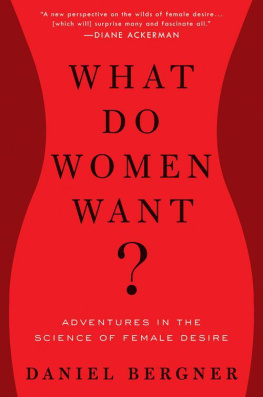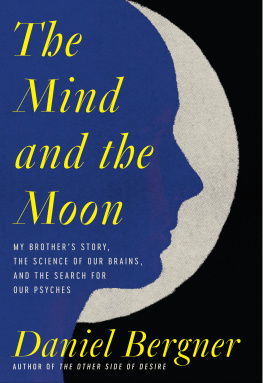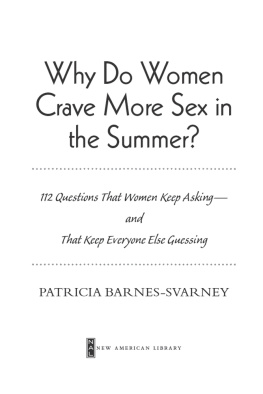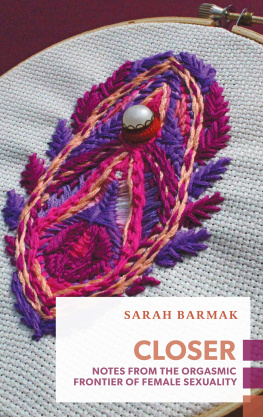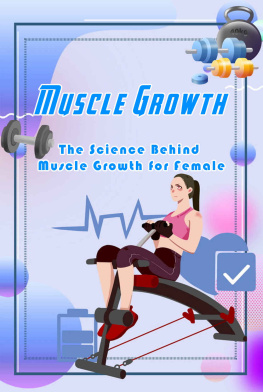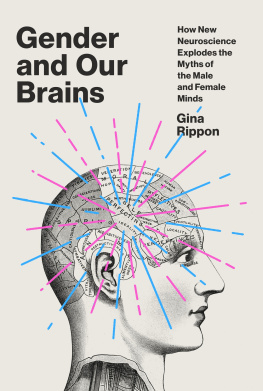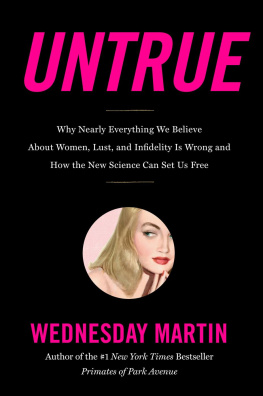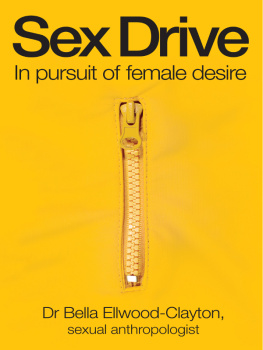For Georgia
Contents
Animals
O n the subject of women and sex, Meredith Chivers was out to obliterate the civilized world. The social conventions, the lists of sins, all the intangible influences needed to go. Ive spent a lot of time, she said, attempting to get back in my head to what life was like for proto-humans.
When Chivers and I first met seven years ago, she was in her mid-thirties. She wore high-heeled black boots that laced up almost to her knees and skinny, stylish rectangular glasses. Her blond hair fell over a scoop-necked black top. She was a young but distinguished scientist in a discipline whose name, sexology, sounds something like a joke, a mismatching of prefix and suffix, of the base and the erudite. Yet the matching is in earnestthe ambitions of the field have always been grand. And Chiverss dreams were no different. She hoped to peer into the workings of the psyche, to see somehow past the consequences of culture, of nurture, of all that is learned, and to apprehend a piece of womens primal and essential selves: a fundamental set of sexual truths that existinherentlyat the core.
Men are animals. On matters of eros, we accept this as a kind of psychological axiom. Men are tamed by society, kept, for the most part, between boundaries, yet the subduing isnt so complete as to hide their natural state, which announces itself in endless waysthrough pornography, through promiscuity, through the infinity of gazes directed at infinite passing bodies of desireand which is affirmed by countless lessons of popular science: that mens minds are easily commandeered by the lower, less advanced neural regions of the brain; that men are programmed by evolutionary forces to be pitched inescapably into lust by the sight of certain physical qualities or proportions, like the .7 waist-to-hip ratio in women that seems to inflame heterosexual males all over the globe, from America to Guinea-Bissau; that men are mandated, again by the dictates of evolution, to increase the odds that their genes will survive in perpetuity and hence that they are compelled to spread their seed, to crave as many .7s as possible.
But why dont we say that women, too, are animals? Chivers was trying to discover animal realities.
She carried out her research in a series of cities, in Evanston, Illinois, which sits right next to Chicago, in Toronto, and most recently in Kingston, Ontario, which feels utterly on its own, tiny, and fragile. The Kingston airport is barely more than a hangar. Kingstons pale stone architecture has a thick, appealing solidity, yet it doesnt chase away the sense that the little downtown area, on the frigid spot where Lake Ontario spills into the Saint Lawrence River, isnt much more formidable than when it was founded as a French fur-trading post in the seventeenth century. Kingston is the home of Queens University, a sprawling and esteemed institution of learning, where Chivers was a psychology professor, but the city is stark and scant enough that it is easy to imagine an earlier emptiness, the buildings gone, the pavement gone, almost nothing there except evergreens and snow.
And this seemed fitting to me when I visited her there. Because to reach the insight she wanted, she needed to do more than strip away societal codes; she needed to get rid of all the streets, all the physical as well as the incorporeal structures that have their effects on the conscious and the unconscious; she needed to re-create some pure, primordial situation, so that she could declare, This is what lies at the heart of womens sexuality.
Plainly, she wasnt going to be able to establish such conditions for her studies. Almost surely, for that matter, such pure conditions never existed, because proto-humans, our forehead-deficient Homo heidelbergensis and Homo rhodesiensis ancestors of some hundreds of thousands of years ago, had proto-cultures. But what she possessed was a plethysmograph: a miniature bulb and light sensor that you place inside the vagina.
This is what her female subjects did as they sat on a brown leatherette La-Z-Boy chair in her small, dimly lit lab in Toronto, where she first told me about her experiments. Semireclining on the La-Z-Boy, each subject watched an array of porn on an old, bulky computer monitor. The two-inch-long glassine tube of the plethysmograph beams light against the vaginal walls and reads the illumination that bounces back. In this way, it measures the blood flow to the vagina. Surges of blood stir a process called vaginal transudation, the seeping of moisture through the cells of the canals lining. So, indirectly, the plethysmograph gauges vaginal wetness. It was a way to get past the obfuscations of the mind, the interference of the brains repressive upper regions, and to find out, at a primitive level, what turns women on.
As they enrolled in the study, Chiverss subjects had identified themselves as straight or lesbian. This is what all of them saw:
A lush-bodied woman lay back beneath her lover on a green army blanket in the woods. His hair was cropped, his shoulders hulking. He propped his torso on rigid arms and slid inside her. She lifted her thighs and enwrapped him with her calves. The pace of his thrusting quickened, the muscles of his buttocks rippled, her fingers spread and seized his triceps.
After each ninety-second clip of porn, the subjects watched a video that sent the plethysmographs readings back to a baseline state. The camera scanned jagged mountains and rested on a parched plateau.
Then a man walked naked on a beach. His back formed a V, and ridges of muscle angled toward his groin above his taut thighs. He flung a stone into the surf. His chest was massive. So were his buttocks, without a hint of fat. He strode along a rock precipice. His penis, relaxed, slung from side to side. He tossed another stone and stretched his spectacular back.
A slender woman with a soft, oval face and dark, curly hair sat on the lip of a large tub. Her skin was tan, her areolas dark. Another woman rose from the water, her soaked blond hair raked behind her ears. She pressed her face between the brunettes thighs and whisked with her tongue.
On his knees an unshaven man mouthed a sizeable penis that rose below a sheer, muscled stomach.
A woman with long black hair leaned forward on the arm of a lounge chair, her smooth buttocks elevated. Then she settled her light brown body onto the white upholstery. Her legs were long, her breasts full, high. She licked her fingertips and stroked her clitoris. She pulled her spread knees up. She handled one breast. Her hips began to grind and lift.
A man drove himself into the ass of another man, who let out a grateful moan; a woman scissored her legs in a solitary session of nude calisthenics; a bespectacled, sculpted man lay on his back and masturbated; a man slipped a womans black thong over her thighs and began with his tongue; a woman straddled another woman who wore a strap-on.
Then a pair of bonobosa species of apestrolled through a grassy field, the males reedy, pig-colored erection on view. Abruptly, the female splayed herself, her back on the ground and legs in the air. While her mate thrust into her, his rhythm furious, she threw her hands above her head, as if in total erotic surrender.
Sitting on the leatherette chair, Chiverss subjects, straight and lesbian, were turned on right away by all of it, including the copulating apes. To stare at the data amassed by the plethysmograph was to confront a vision of anarchic arousal.
T his was my initial glimpse of sexologys strivings after female desire. Chiverss husband, a psychologist whose thinking Id sought out for another book about sex, introduced us. And soon I was learning not only from Chivers but from many of the researchers she called a gathering critical mass of female scientists who were set on puzzling out the ways of eros in women. There was Marta Meana with her high-tech eye-tracker and Lisa Diamond with her low-tech, long-term studies of womens erotic existences and Terri Fisher with her fake polygraph machine. Men, too, were part of the project. There was Kim Wallen with his monkeys and Jim Pfaus with his rats. There was Adriaan Tuiten with his genetic screening and his specially designed aphrodisiacs, Lybrido and Lybridos, that were headed to the Food and Drug Administration for approval.

